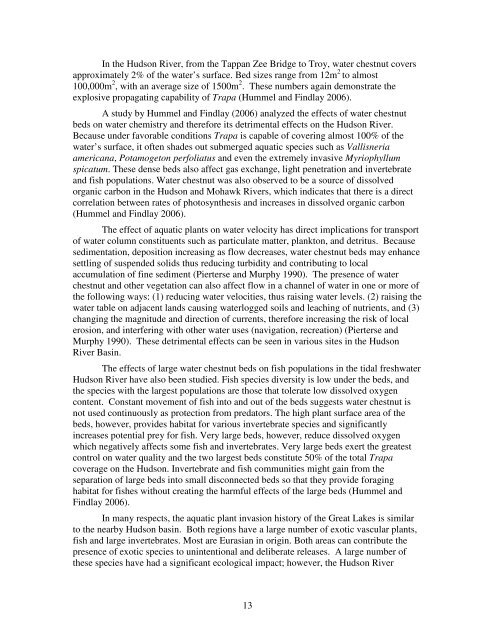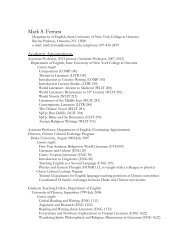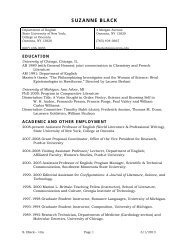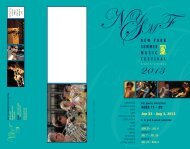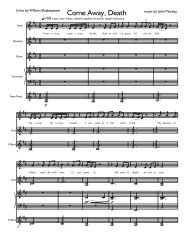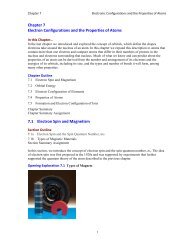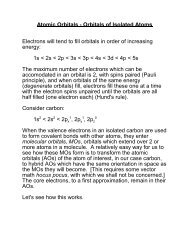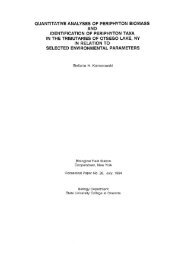Water Chestnut (Trapa natans L.) Infestation in the ... - SUNY Oneonta
Water Chestnut (Trapa natans L.) Infestation in the ... - SUNY Oneonta
Water Chestnut (Trapa natans L.) Infestation in the ... - SUNY Oneonta
You also want an ePaper? Increase the reach of your titles
YUMPU automatically turns print PDFs into web optimized ePapers that Google loves.
In <strong>the</strong> Hudson River, from <strong>the</strong> Tappan Zee Bridge to Troy, water chestnut covers<br />
approximately 2% of <strong>the</strong> water’s surface. Bed sizes range from 12m 2 to almost<br />
100,000m 2 , with an average size of 1500m 2 . These numbers aga<strong>in</strong> demonstrate <strong>the</strong><br />
explosive propagat<strong>in</strong>g capability of <strong>Trapa</strong> (Hummel and F<strong>in</strong>dlay 2006).<br />
A study by Hummel and F<strong>in</strong>dlay (2006) analyzed <strong>the</strong> effects of water chestnut<br />
beds on water chemistry and <strong>the</strong>refore its detrimental effects on <strong>the</strong> Hudson River.<br />
Because under favorable conditions <strong>Trapa</strong> is capable of cover<strong>in</strong>g almost 100% of <strong>the</strong><br />
water’s surface, it often shades out submerged aquatic species such as Vallisneria<br />
americana, Potamogeton perfoliatus and even <strong>the</strong> extremely <strong>in</strong>vasive Myriophyllum<br />
spicatum. These dense beds also affect gas exchange, light penetration and <strong>in</strong>vertebrate<br />
and fish populations. <strong>Water</strong> chestnut was also observed to be a source of dissolved<br />
organic carbon <strong>in</strong> <strong>the</strong> Hudson and Mohawk Rivers, which <strong>in</strong>dicates that <strong>the</strong>re is a direct<br />
correlation between rates of photosyn<strong>the</strong>sis and <strong>in</strong>creases <strong>in</strong> dissolved organic carbon<br />
(Hummel and F<strong>in</strong>dlay 2006).<br />
The effect of aquatic plants on water velocity has direct implications for transport<br />
of water column constituents such as particulate matter, plankton, and detritus. Because<br />
sedimentation, deposition <strong>in</strong>creas<strong>in</strong>g as flow decreases, water chestnut beds may enhance<br />
settl<strong>in</strong>g of suspended solids thus reduc<strong>in</strong>g turbidity and contribut<strong>in</strong>g to local<br />
accumulation of f<strong>in</strong>e sediment (Pierterse and Murphy 1990). The presence of water<br />
chestnut and o<strong>the</strong>r vegetation can also affect flow <strong>in</strong> a channel of water <strong>in</strong> one or more of<br />
<strong>the</strong> follow<strong>in</strong>g ways: (1) reduc<strong>in</strong>g water velocities, thus rais<strong>in</strong>g water levels. (2) rais<strong>in</strong>g <strong>the</strong><br />
water table on adjacent lands caus<strong>in</strong>g waterlogged soils and leach<strong>in</strong>g of nutrients, and (3)<br />
chang<strong>in</strong>g <strong>the</strong> magnitude and direction of currents, <strong>the</strong>refore <strong>in</strong>creas<strong>in</strong>g <strong>the</strong> risk of local<br />
erosion, and <strong>in</strong>terfer<strong>in</strong>g with o<strong>the</strong>r water uses (navigation, recreation) (Pierterse and<br />
Murphy 1990). These detrimental effects can be seen <strong>in</strong> various sites <strong>in</strong> <strong>the</strong> Hudson<br />
River Bas<strong>in</strong>.<br />
The effects of large water chestnut beds on fish populations <strong>in</strong> <strong>the</strong> tidal freshwater<br />
Hudson River have also been studied. Fish species diversity is low under <strong>the</strong> beds, and<br />
<strong>the</strong> species with <strong>the</strong> largest populations are those that tolerate low dissolved oxygen<br />
content. Constant movement of fish <strong>in</strong>to and out of <strong>the</strong> beds suggests water chestnut is<br />
not used cont<strong>in</strong>uously as protection from predators. The high plant surface area of <strong>the</strong><br />
beds, however, provides habitat for various <strong>in</strong>vertebrate species and significantly<br />
<strong>in</strong>creases potential prey for fish. Very large beds, however, reduce dissolved oxygen<br />
which negatively affects some fish and <strong>in</strong>vertebrates. Very large beds exert <strong>the</strong> greatest<br />
control on water quality and <strong>the</strong> two largest beds constitute 50% of <strong>the</strong> total <strong>Trapa</strong><br />
coverage on <strong>the</strong> Hudson. Invertebrate and fish communities might ga<strong>in</strong> from <strong>the</strong><br />
separation of large beds <strong>in</strong>to small disconnected beds so that <strong>the</strong>y provide forag<strong>in</strong>g<br />
habitat for fishes without creat<strong>in</strong>g <strong>the</strong> harmful effects of <strong>the</strong> large beds (Hummel and<br />
F<strong>in</strong>dlay 2006).<br />
In many respects, <strong>the</strong> aquatic plant <strong>in</strong>vasion history of <strong>the</strong> Great Lakes is similar<br />
to <strong>the</strong> nearby Hudson bas<strong>in</strong>. Both regions have a large number of exotic vascular plants,<br />
fish and large <strong>in</strong>vertebrates. Most are Eurasian <strong>in</strong> orig<strong>in</strong>. Both areas can contribute <strong>the</strong><br />
presence of exotic species to un<strong>in</strong>tentional and deliberate releases. A large number of<br />
<strong>the</strong>se species have had a significant ecological impact; however, <strong>the</strong> Hudson River<br />
13


